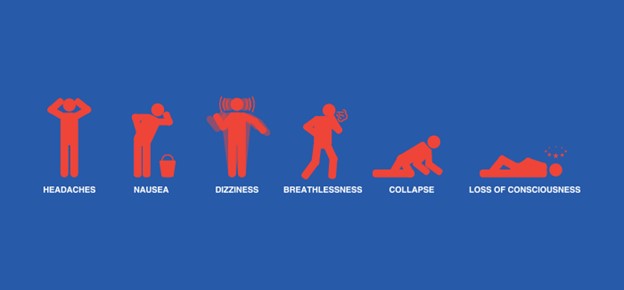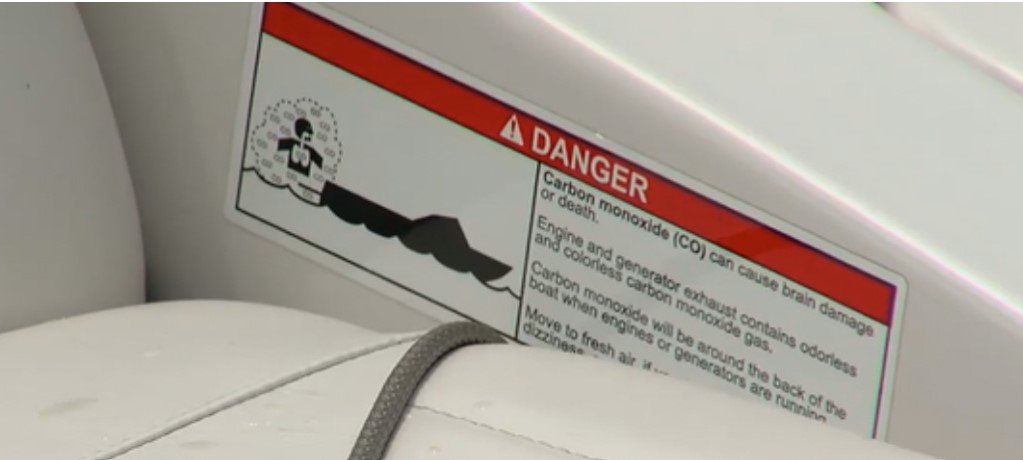Carbon Monoxide Poisoning: The Silent Killer
Carbon monoxide poisoning – Learn about the potential dangers as well as the safety measures necessary to protect against it.
In the calm waters where houseboats and recreational vessels drift, there is an unseen, silent threat – carbon monoxide (CO). This odorless, colorless gas is often overlooked but can pose deadly risks. At Boatinfohub, we are committed to educating boat owners and enthusiasts about the potential dangers as well as the safety measures necessary to protect against carbon monoxide poisoning. This comprehensive guide will explore the sources, symptoms, prevention, and essential safety protocols to keep your aquatic adventures safe.
What is Carbon Monoxide?
Carbon monoxide is a colorless, odorless gas produced by burning fuel. It can be emitted from engines, generators, stoves, and any other equipment that burns fuel. In confined spaces like houseboats and recreational vessels, carbon monoxide can accumulate to dangerous levels, posing serious health risks..
Sources of Carbon Monoxide on Houseboats and Recreational Vessels
Understanding where carbon monoxide comes from on your vessel is crucial for prevention. Common sources include:
Engine Exhaust: Engines, both inboard and outboard, are primary sources of CO. Exhaust gases can seep into the cabin area, especially if the engine is poorly maintained or inadequately ventilated.
Generators: Onboard generators, often used for powering appliances, can produce CO. Improperly vented generators pose a high risk, especially when running while the boat is stationary.
Heaters and Stoves: Gas-operated stoves and heaters can emit CO if they aren’t functioning properly or if there’s insufficient ventilation.
Nearby Boats: CO from nearby vessels can enter your boat, especially when boats are anchored closely together
Symptoms of Carbon Monoxide Poisoning
Early recognition of carbon monoxide poisoning symptoms is crucial. Carbon monoxide is readily absorbed into the bloodstream, where it binds to hemoglobin 200 times more easily than oxygen. This reduces the blood’s ability to carry oxygen, leading to the following symptoms:
Initial Symptoms
- Headache
- Nausea
- Dizziness
- Weakness
- Chest pain
- Fatigue
Advanced Symptoms
- Confusion
- Vomiting
- Loss of coordination
- Loss of consciousness

Preventative Measures
Preventing carbon monoxide poisoning requires proactive measures and regular maintenance. Here are essential steps to safeguard against CO exposure:
Install Carbon Monoxide Detectors
Install marine-rated CO detectors in all living and sleeping areas of your houseboat or vessel. Regularly test and maintain these detectors to ensure they function correctly.
Maintain Engines and Fuel-burning Appliances
Regular maintenance and inspection of engines, generators, and other fuel-burning appliances are crucial. Ensure exhaust systems are in good condition and have no leaks.
Proper Ventilation
Ensure your vessel is well-ventilated. Open windows, hatches, and use exhaust fans to disperse CO build up, especially when engines or generators are running.
Avoid Idling Engines
Avoid idling engines near confined spaces or in enclosed areas. Always dock with engines off and ensure proper ventilation when engines are in use. Stay away from the transom while the vessel is idling or underway.
Position Generators and Engines Properly
Ensure that generators and engines are positioned and exhausted away from the boat’s living spaces. Avoid using portable generators on the swim platform or in other areas where exhaust can easily enter the cabin.
Monitor Weather Conditions
Be aware of wind direction and weather conditions. Calm and low-wind conditions can allow CO to accumulate around the vessel.
Avoid the “Station Wagon Effect”
The “station wagon effect” occurs when your boat is moving at slow speeds or idling and exhaust fumes are drawn into the cabin. Minimize the chance by maintaining adequate ventilation and avoiding prolonged idling.
Use Warning Labels
Clearly display CO warning labels in prominent areas, such as near the engine compartment and generator, to remind everyone aboard of the potential danger.

Once a Month
- Make sure all exhaust clamps are in place and secure.
- Look for exhaust leaking from exhaust system components. Signs include rust and/or
- black streaking, water leaks, or corroded or cracked fittings.
- Inspect rubber exhaust hoses for burned, cracked or deteriorated sections. All rubber
- hoses should be pliable and free of kinks.
Must Do – Annually by a Qualified Marine Technician:
- Replace exhaust hoses if any evidence is found of cracking, charring, or deterioration.
- Ensure that your engines and generators are properly tuned and well-maintained.
- Inspect each water pump impeller and check the condition of the water pump housing.
- Replace if necessary.
- Inspect each of the metallic exhaust components for cracks, rust, leaks, or looseness.
- Pay particular attention to the cylinder head, exhaust manifold, and water injection
- elbow.
- Clean, inspect, and confirm proper operation of the generator cooling water anti-siphon
- valve (if equipped).
Emergency Response
Knowing how to respond in a carbon monoxide emergency can save lives. Quick and decisive action is critical. The rate at which an individual absorbs CO into their body depends on many factors: age, general health, physical activity, and altitude, among others. If you suspect that someone is suffering from carbon monoxide poisoning, take following safety measures:
Steps to Take if CO Alarm Sounds
- Move to Fresh Air: Immediately get everyone to fresh air.
- Shut Off Engines and Appliances: Turn off all fuel-burning engines and appliances.
- Seek Medical Attention: If anyone is experiencing symptoms, seek medical attention immediately.
- Inspect and Repair: Once safe, inspect the vessel for CO sources and repair any issues before resuming activities.
Case Studies and Real Incidents
Several incidents underscore the seriousness of carbon monoxide (CO) poisoning on boats. In 2000, a family of four suffered from CO poisoning while sleeping on their houseboat after the generator had been running overnight. Tragically, two of the family members passed away, highlighting the need for CO detectors and awareness about engine exhaust dangers.
In another case, a group of friends on a houseboat experienced symptoms of CO poisoning, including headaches and dizziness. They identified the cause as exhaust fumes from their generator, which was not properly vented. Quick thinking and relocating to fresh air saved their lives.
FAQs about Carbon Monoxide Poisoning on Houseboats and Recreational Vessels
Q: What is carbon monoxide and why is it dangerous?
A: Carbon monoxide is a colorless, odorless gas that can be deadly when inhaled. It binds to hemoglobin in the blood, preventing oxygen from being delivered to tissues and organs, which can lead to severe health issues or death.
Q: How can I tell if someone is experiencing carbon monoxide poisoning?
A: Early symptoms include headache, dizziness, nausea, and fatigue. Advanced symptoms can include confusion, vomiting, loss of coordination, and unconsciousness. If you suspect CO poisoning, get to fresh air immediately and seek medical attention.
Q: Where should I install carbon monoxide detectors on my vessel?
A: Install marine-rated CO detectors in all living and sleeping areas. Regularly test and maintain these detectors to ensure they are functioning correctly.
Q: How often should I inspect my boat’s engines and fuel-burning appliances?
A: Engines and fuel-burning appliances should be inspected and maintained regularly, according to the manufacturer’s recommendations. At a minimum, conduct thorough inspections at the beginning of each boating season.
Q: What should I do if my carbon monoxide detector goes off?
A: Immediately move everyone to fresh air, turn off all engines and fuel-burning appliances, and seek medical attention if anyone is experiencing symptoms. Inspect your vessel for CO sources and repair any issues before resuming use.
Conclusion
Carbon monoxide is a silent but deadly threat on houseboats and recreational vessels. At Boatinfohub, we are committed to helping you stay safe on the water. By understanding the sources, recognizing the symptoms, and implementing prevention measures, you can protect yourself from this invisible danger. Ensure your vessel is equipped with functioning CO detectors, maintain your engines and appliances, and always prioritize ventilation. Safe boating means staying informed and prepared, so you can enjoy your time on the water without worry.
As recreational boating season approaches let’s prioritize safety to make sure that our experiences on houseboats and other vessels are joyful and free from the hidden dangers of carbon monoxide. By taking above mentioned proactive steps, you can protect your loved ones from this silent killer, creating a safe and healthy environment on the water.



